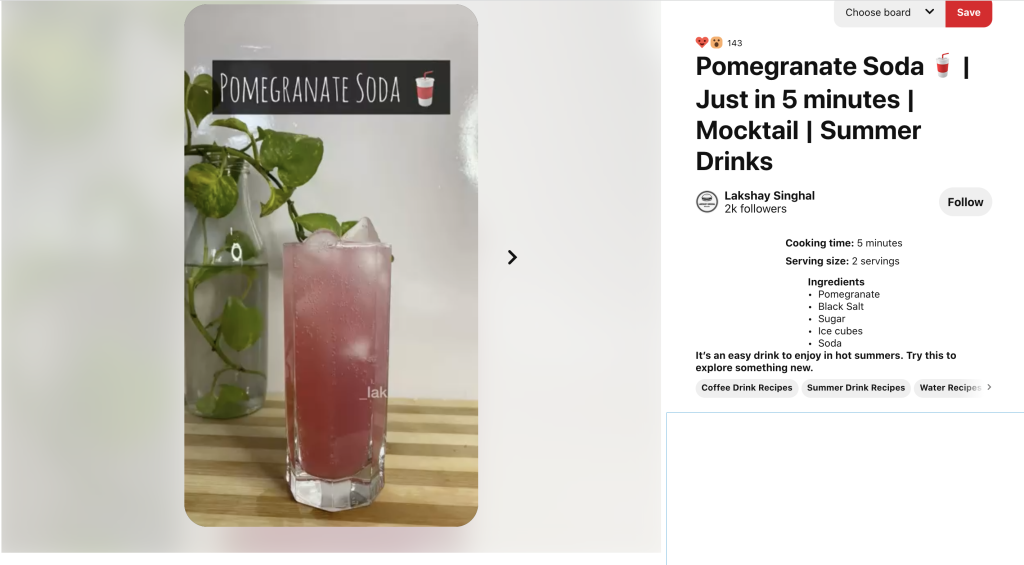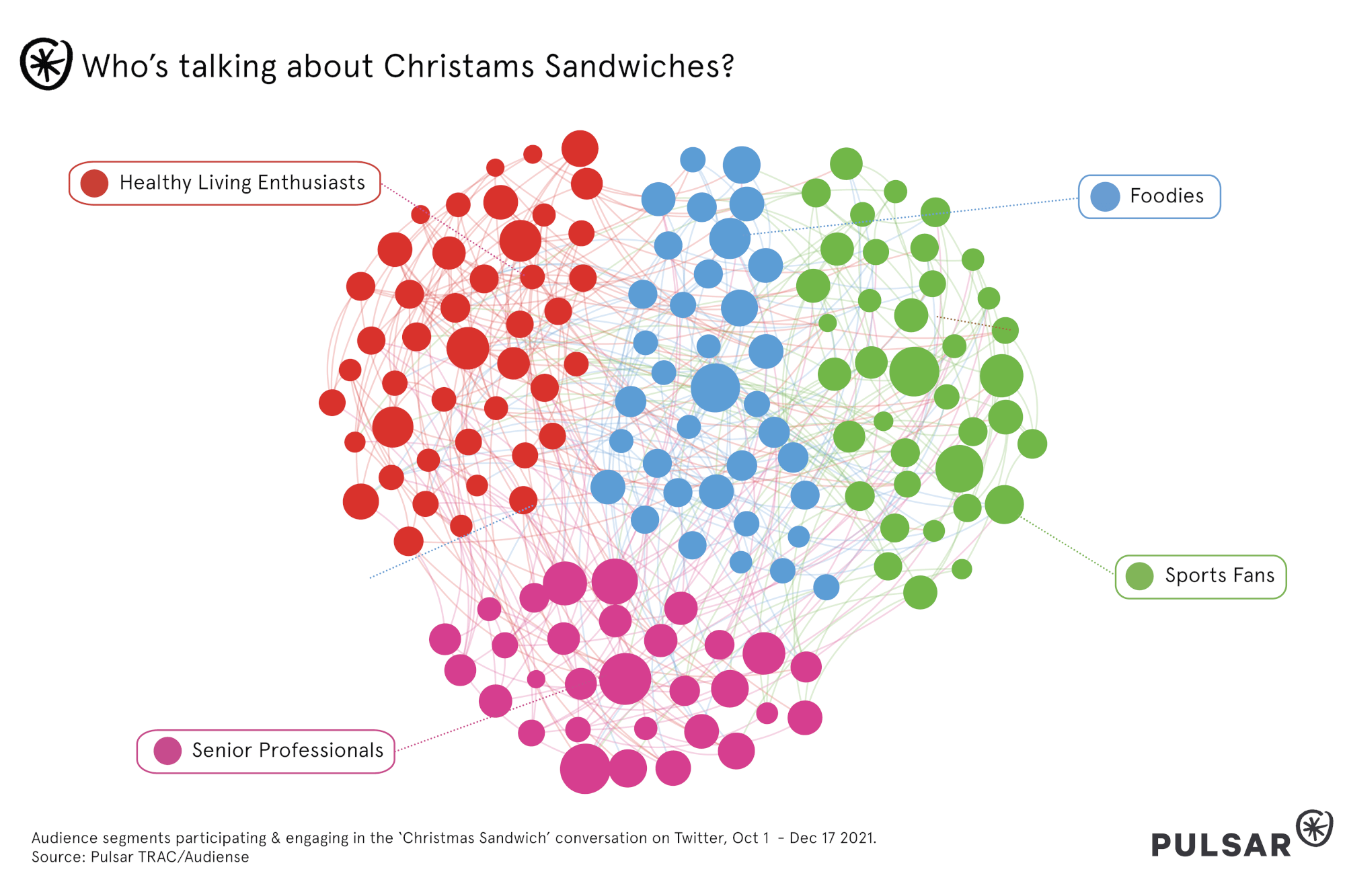
Unbottling the buzz around low & no alcohol beverages
As interest in health & wellness continues to grow throughout the culture, the industry responsible for packaging, selling and marketing ‘buzz’ has decided to take some of the edge off. The drinks industry has ventured into a whole new category of products: low and no alcohol.
Within many western cultures, alcohol has long played an integral part in social interactions. By charting mentions of different low or no alcohol trends against a corresponding decrease in search terms relating to drunkeness, however, we can see a paradigm shift beginning to take place.
So what drives people to choose non-alcoholic drinks? And which brands, flavors and audiences dominate the evolving scene?
Drawing in data from Instagram, TikTok, Pinterest, Twitter, Forums, News and beyond, we tracked mentions of low or no alcoholic drinks from May 2021 to Nov 2021, to better understand these shifts in behavior as they take place around us.
First of all, what drives an individual to choose the low or non-alcoholic option?
Being placed within a social setting sits neck and neck with a desire to live healthier as the main drivers behind the decision to drink a reduced alcohol beverage. Not that the two are exclusive – in fact, an individual might base their decision on any number of combinations.
While some of these drivers, such as abstinence on ethical grounds, are millenia-old, others like mindful drinking, or seeking to pace oneself, are more nascent trends that would have found little purchase in previous generations.
We see this intersection between the established and the novel play out among the different types of beverage too.
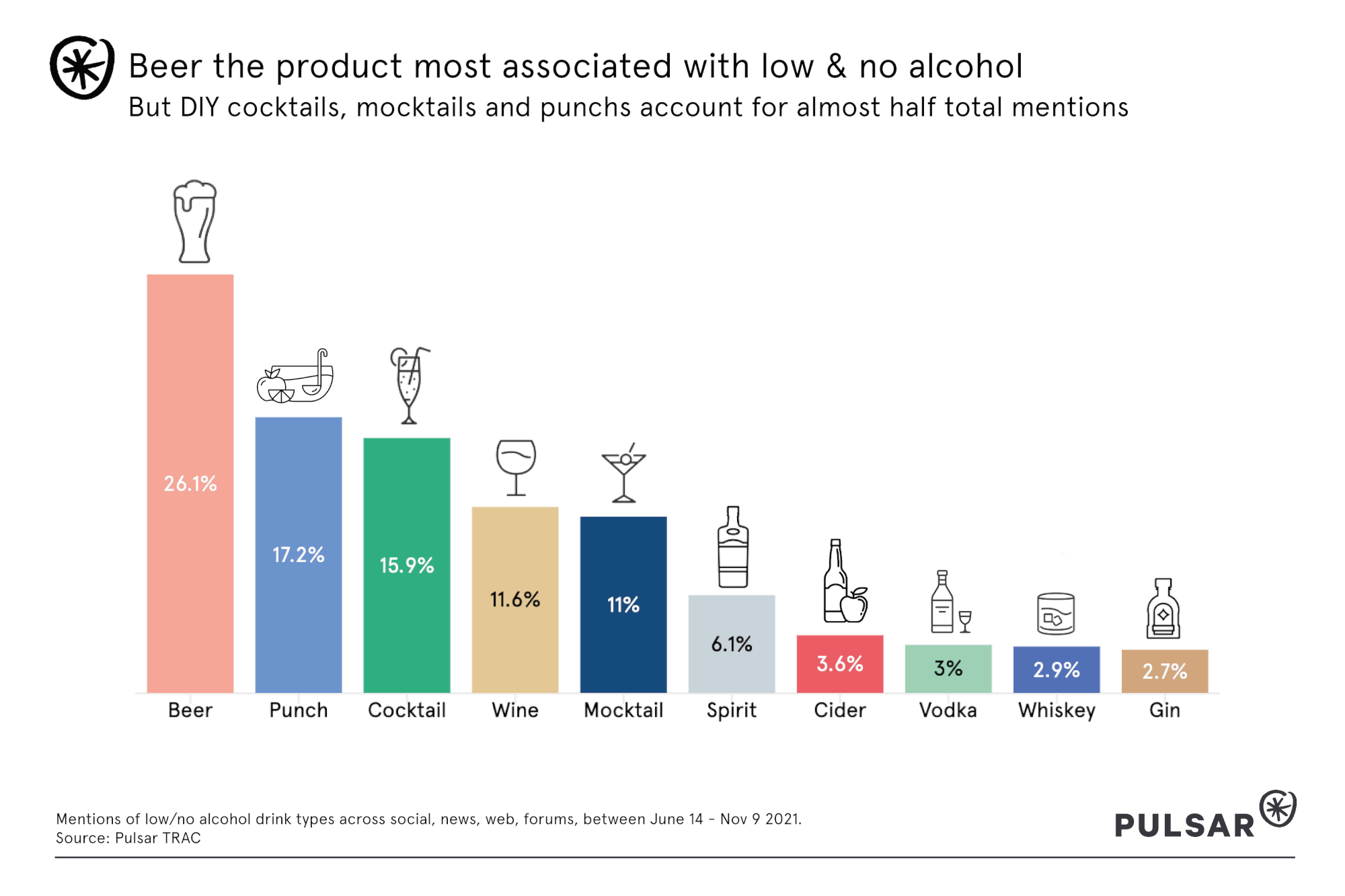
Non-alcoholic beer remains the most established alternative. It would come a distant second, however, were the swell of interest behind virgin cocktails, mocktails and non-alcoholic punches combined.
In large part, this is due to individuals making their own recipes at home, a trend accentuated by lockdowns and more immediately visible on sites geared toward sharing recipes, such as Pinterest.
And this, in turn, has a knock on effect-on the types of flavors most closely identified with the trend:
There is a clear preference for citrus and fruity flavors amongst drinkers, which crop up in contexts as diverse as homespun recipes to heavily marketed new releases. The unifying factor appears to be that these categories both offer room for invention – and new ‘twists’ on established recipes – while retaining enough similarity with traditional alcoholic drinks to remain an alcohol-free ‘alternative’, rather than something else entirely.
From spirits to seltzers - 3 consumer trends around ‘healthier’ drinking
Of course, this trend pulls together numerous different types of consumption, and can fracture depending on the dominant trends of the moment.
Comparing the normalized volumes of non-alcoholic beer, the most established player on the scene, with non-alcoholic botanical spirits – an emergent product type – as well as hard seltzer – an alcoholic but calorie-light addition – showcases the rise and fall of different preferences and behaviors.
Clearly, hard seltzer is most closely identified with summer, and has seen diminishing returns since summer ‘19. Non-alcoholic beer, on the other hand, has clocked comparatively steady upwards growth, while non-alcoholic spirits has exploded from a low base in 2021.
To better understand why these changes take place, it’s illuminating to take a closer look at who exactly is engaging with these topics on social media. And, using Pulsar’s Communities integration, we can do just that.
Analysing how these conversations play out across the US, UK, Australia and New Zealand, we see several trends across these different audiences.
Although the largest audience segment within non-alcoholic beer conversation is primarily American (‘Business, Broadcasts and Beers’ – Newsgazers with an affinity for business publications and beer), many of the most well-defined segments share an affinity for British culture, particularly sporting institutions like the horse-racing industry and Manchester United. It’s also, unsurprisingly, male. And it would be more so were it not for the presence of K-Pop fans, whose love for the band SEVENTEEN and their song ‘Alcohol Free’ has helped embed references to non-alcoholic beer within the subculture as a meme and point of humour.
The audience around Hard Seltzer is more evenly distributed, gender-wise, and far younger. This latter point goes towards explaining why the trend peaked and fell so sharply, among a consumer base who’ve had neither the time nor the inclination to build up brand loyalty. Audience segments such as ‘American EDM Fans’ are disproportionately likely to attend summer events, which help contribute to that season peak.
The extent to which these segments engage with the topic on an authentic, consumer basis is also variable. For one thing, US Comedy Fans frame the drink as a punchline:
https://twitter.com/zackvee/status/1422273994573504512
‘American Beerologists’ are also inclined to diminish Seltzer culture:
https://twitter.com/eoghanwalsh/status/1392004256761323521
Which brings us to non-alcoholic spirits. Brands within this space aim to offer products that contain the same sensations of luxury, expense and potency that have become attached over time to traditional, alcoholic spirits.
This is borne out in the types of community engaging with it, which include Beverage Businesspeople, N.American Cannabis Culture and Food Alchemists, all communities whose identity is tied to taking a particular form of consumption very seriously.
Equally, the trend is still in the ascendancy, which explains the presence of both VC/Startup Culture and several segments linked to individual promotional campaigns, such as T-Mobile Followers:
https://twitter.com/TMobile/status/1407716275837538306
Given that both non-alcoholic beers and spirits have achieved all-time highs in their social mentions in 2021, we can also take a closer look at each category, to identify the brands that are best riding the moment.
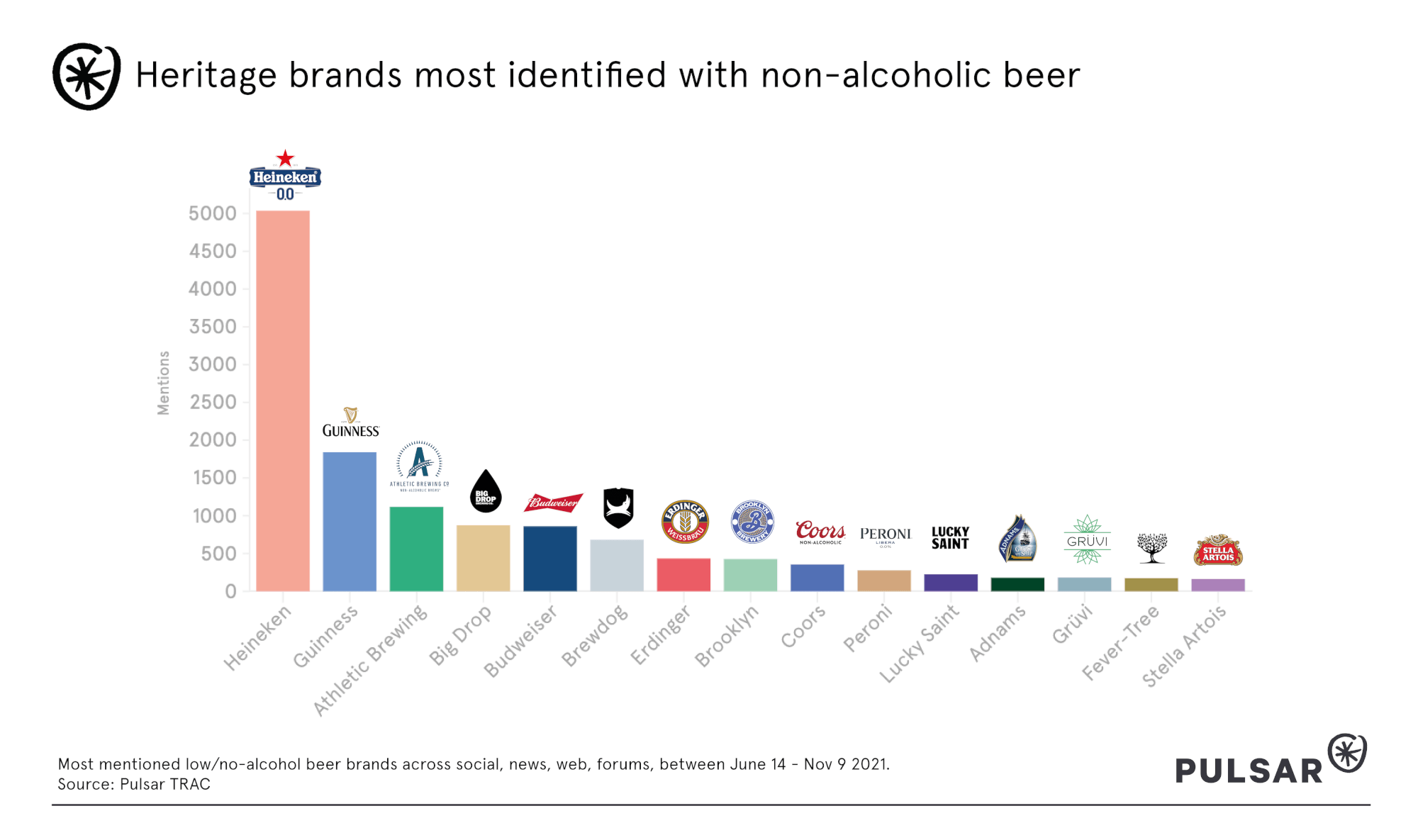
Heineken is by some distance the beer brand most readily associated with the low and no alcohol trend. While this association has been boosted by numerous sponsorship deals, such as those with EURO 2020 and the James Bond franchise, it also emerges time and time again on forums such as Reddit. Often, it is regarded as an ‘entry’ into the world of non-alcoholic beers.
The non-alcoholic spirits scene is naturally very different.
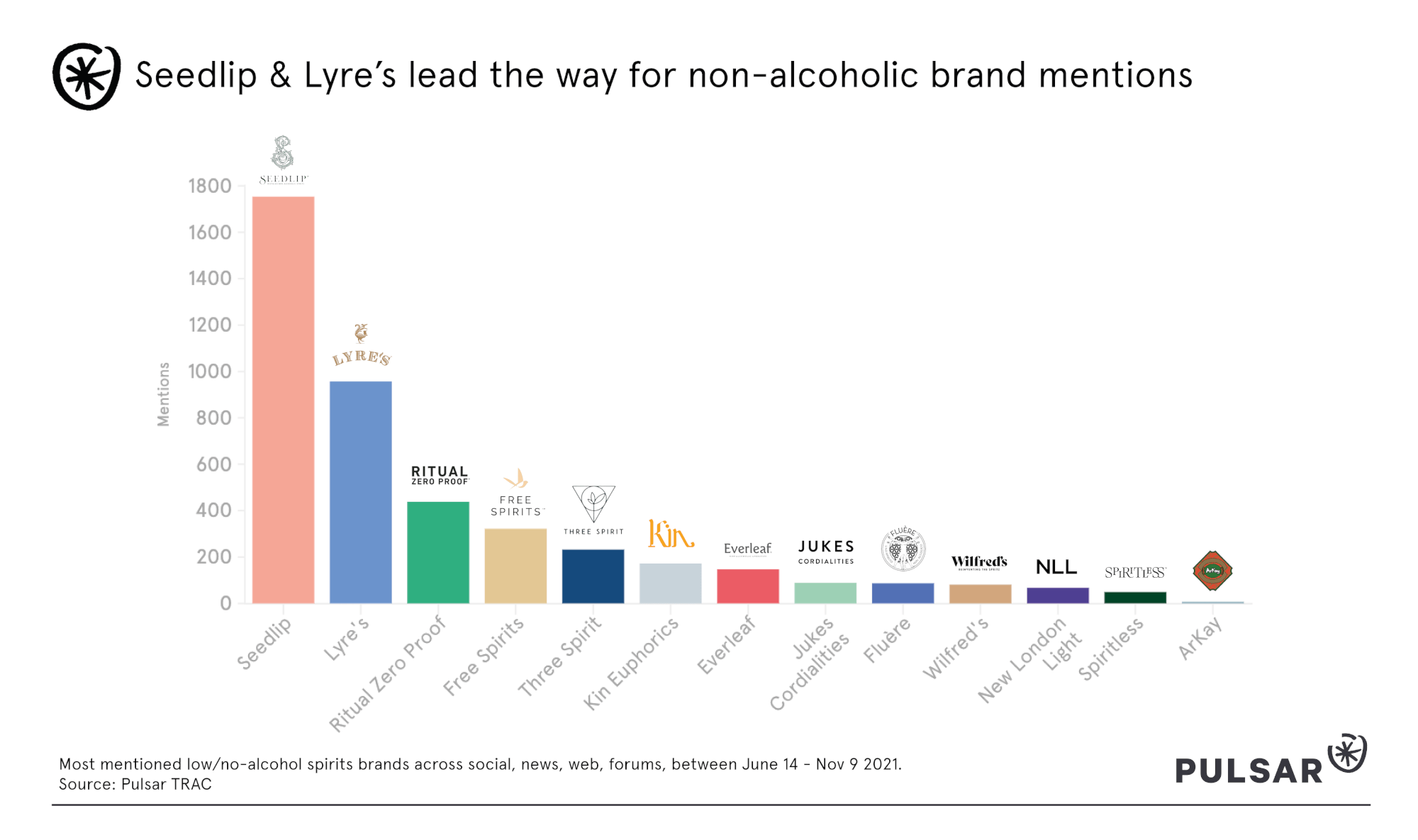
This space is dominated by new and emerging brands. Similar to beers, however, we see one brand stand head and shoulders above the others - in this case, Seedlip, which is enjoying the reputational boost and strong brand recognition afforded by being one of the first movers within the space.
If you’re interested in diving deeper into this dataset or would like to learn more about how Pulsar can help food and drinks brands understand their audiences and emerging trends, just fill out the form below.
